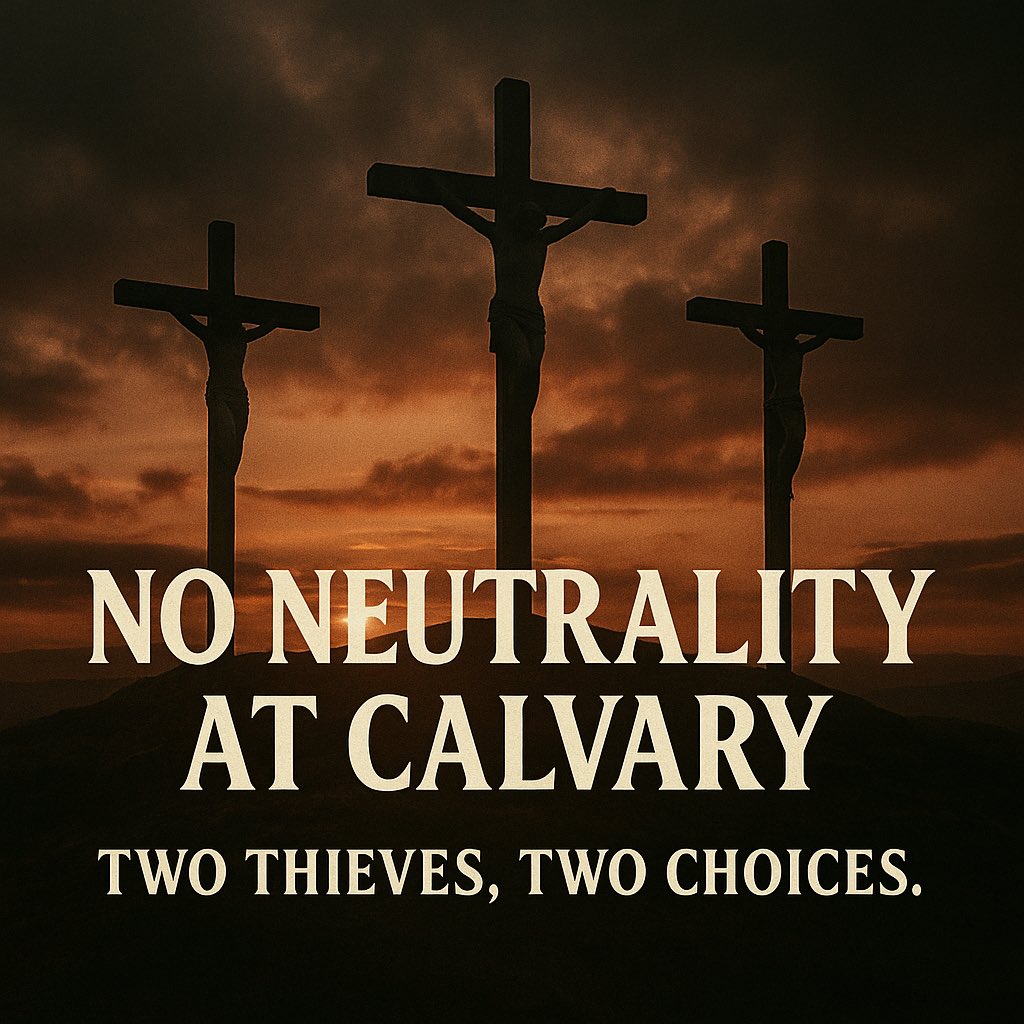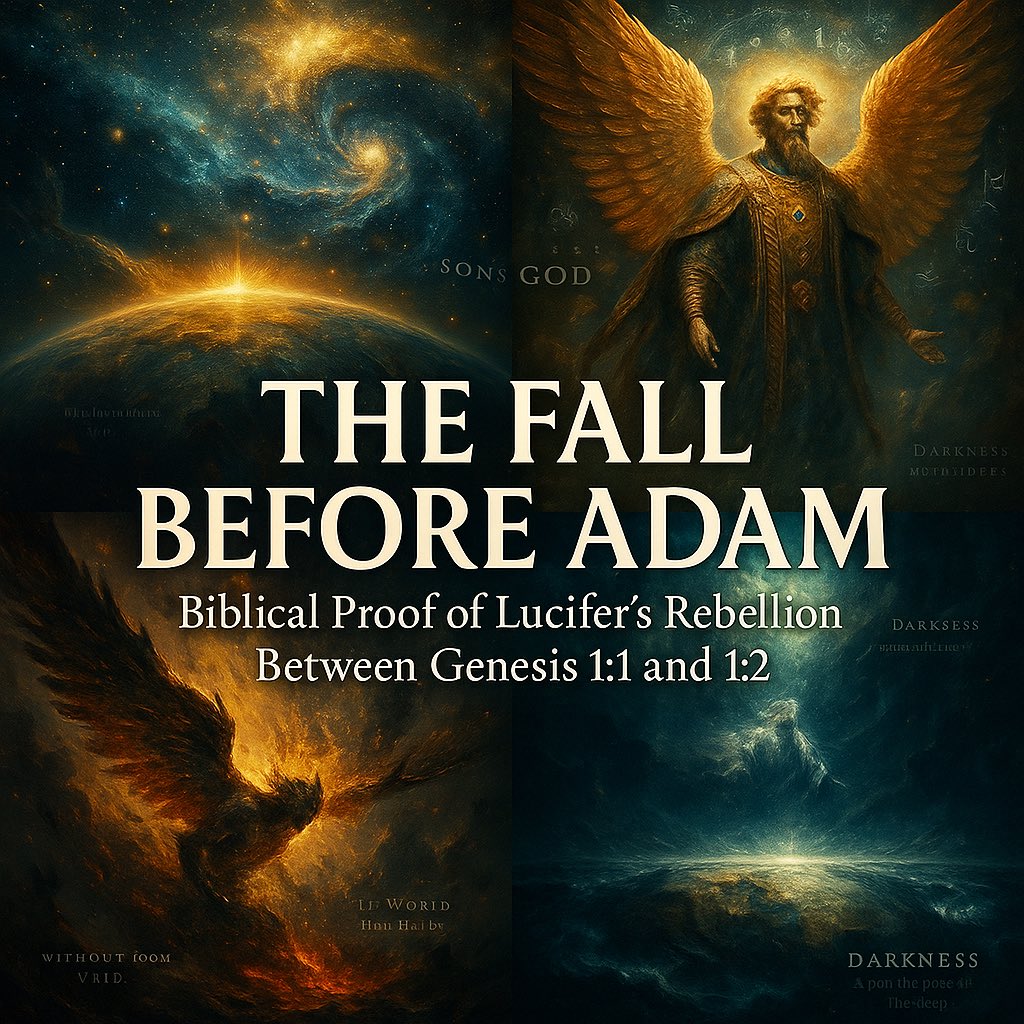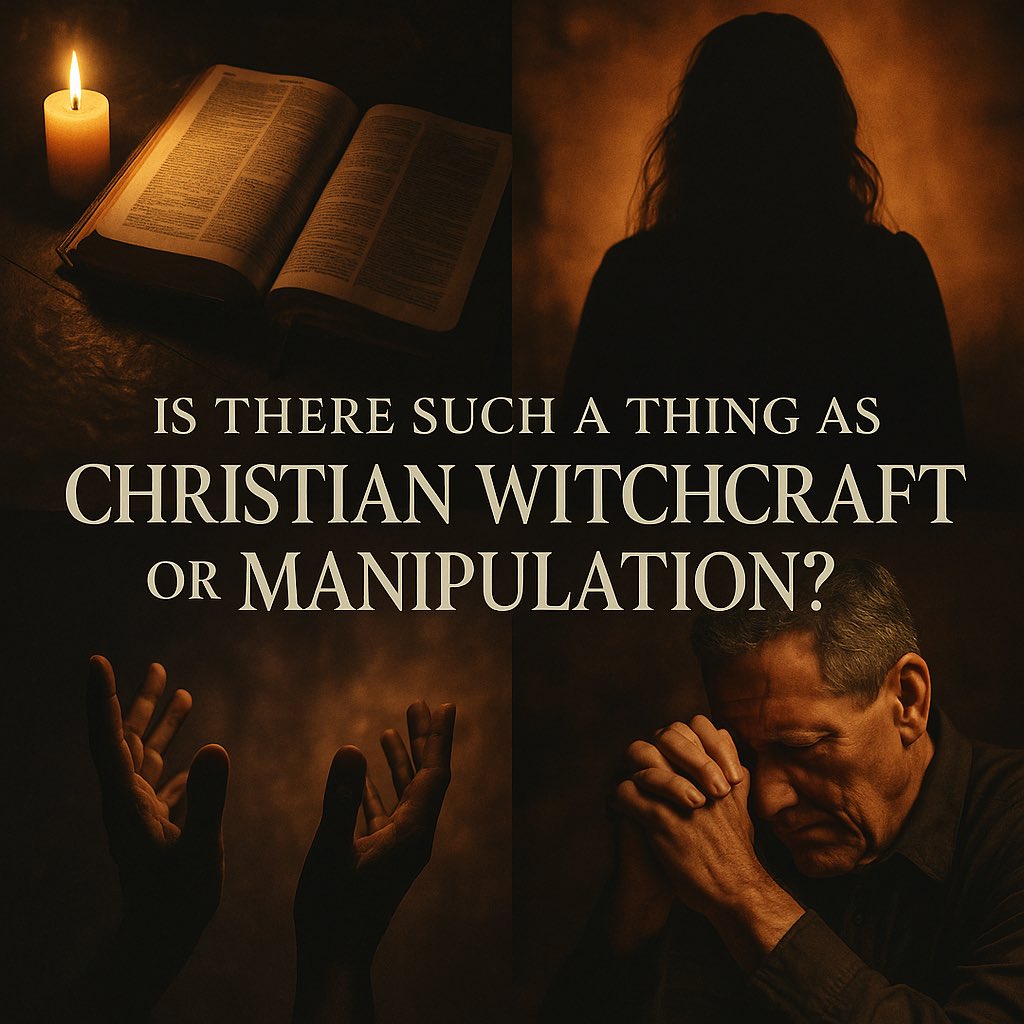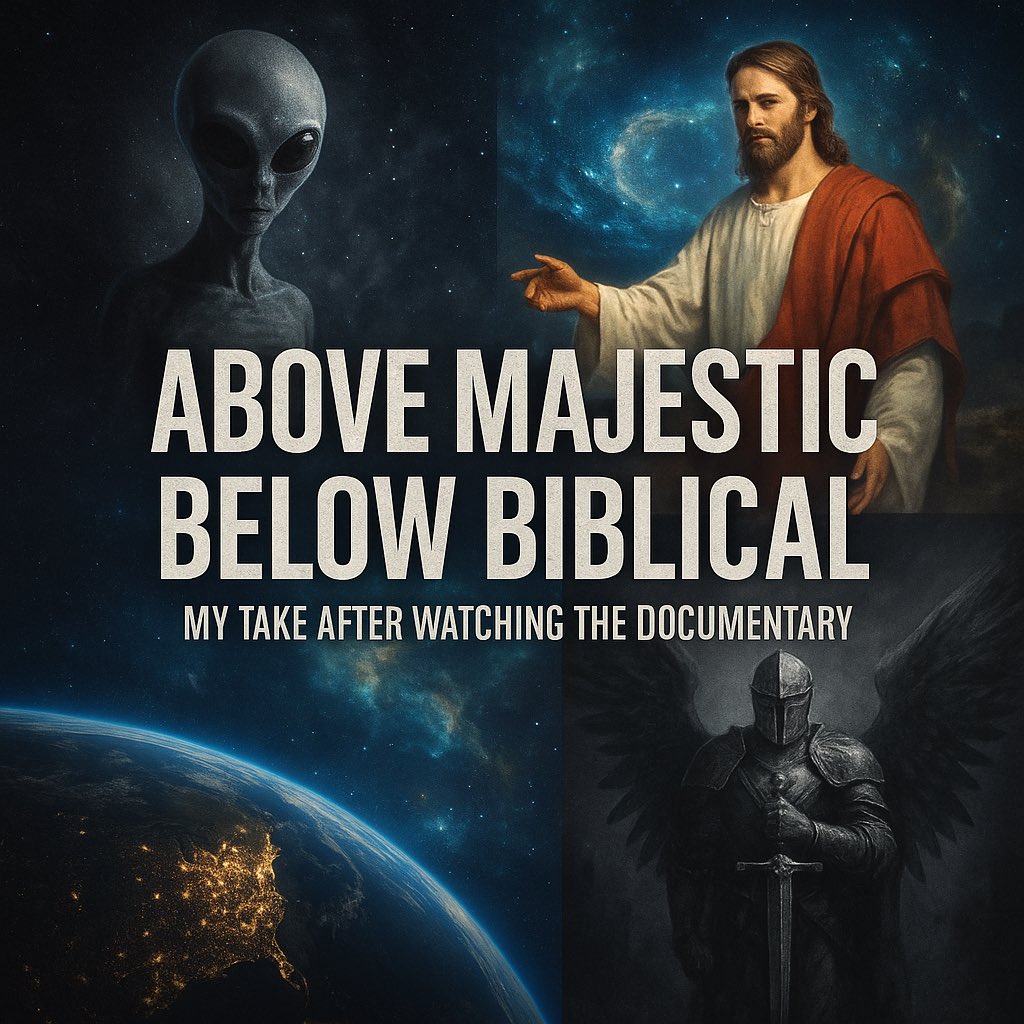
Pastor | Bible Believer | Teaching Truth in a World of Deception 📖🔥 Explore the Word. Discover Truth. | https://t.co/IXKykBfEjK | YouTube: TNT Teaching Needs Truth
5 subscribers
How to get URL link on X (Twitter) App


 Self-sufficiency kills dependence, and dependence is the soil where spiritual fire grows. When a believer no longer needs God for daily survival, guidance, or strength, prayer becomes optional, Scripture becomes occasional, and obedience becomes selective. Lukewarmness thrives where life is easy and faith costs nothing.
Self-sufficiency kills dependence, and dependence is the soil where spiritual fire grows. When a believer no longer needs God for daily survival, guidance, or strength, prayer becomes optional, Scripture becomes occasional, and obedience becomes selective. Lukewarmness thrives where life is easy and faith costs nothing.
 3. Ararat as the Place of Elevation and Safety
3. Ararat as the Place of Elevation and Safety
 3. Discernment Is Impossible Without the Word of God
3. Discernment Is Impossible Without the Word of God
 Many today resemble that thief. They sit near truth, hear sermons, read Scripture, and experience conviction, yet their response is sarcasm, cynicism, and pride. They do not deny God exists; they resent that He will not bow to them. They want God on their terms. When He refuses, they mock Him. That thief did not die because he lacked opportunity. He died because he rejected grace while staring at it.
Many today resemble that thief. They sit near truth, hear sermons, read Scripture, and experience conviction, yet their response is sarcasm, cynicism, and pride. They do not deny God exists; they resent that He will not bow to them. They want God on their terms. When He refuses, they mock Him. That thief did not die because he lacked opportunity. He died because he rejected grace while staring at it.
 So when people say, “Are planets named after ancient gods?” the biblical answer is that planets are wandering angelic beings, and the ancient gods were fallen angels who deceived mankind into worshipping them. That is what Paul meant when he said the Gentiles “sacrificed unto devils, and not to God” (1 Corinthians 10:20). NASA may rename everything, but a lie with funding is still a lie.
So when people say, “Are planets named after ancient gods?” the biblical answer is that planets are wandering angelic beings, and the ancient gods were fallen angels who deceived mankind into worshipping them. That is what Paul meant when he said the Gentiles “sacrificed unto devils, and not to God” (1 Corinthians 10:20). NASA may rename everything, but a lie with funding is still a lie.
 adorned in precious stones, walking in the midst of the stones of fire, anointed to cover the throne of God.
adorned in precious stones, walking in the midst of the stones of fire, anointed to cover the throne of God.
 CHAPTER ONE — THE PARTHENON THAT SHOULDN’T BE THERE
CHAPTER ONE — THE PARTHENON THAT SHOULDN’T BE THERE
 operate through occult ceremony; they operated through psychological and spiritual manipulation. The Bible calls such behavior witchcraft because its root is the same as the occult’s: attempting to wield spiritual authority without submitting to God’s Spirit. This broader definition forces Christians to see that witchcraft does not start in the occult bookstore; it starts in the rebellious heart that insists on having its own way, even when that insistence is dressed up in religious justification.
operate through occult ceremony; they operated through psychological and spiritual manipulation. The Bible calls such behavior witchcraft because its root is the same as the occult’s: attempting to wield spiritual authority without submitting to God’s Spirit. This broader definition forces Christians to see that witchcraft does not start in the occult bookstore; it starts in the rebellious heart that insists on having its own way, even when that insistence is dressed up in religious justification.
 tampering with creation. The devil has always offered “higher knowledge”. It was his sales pitch to Eve in the garden. Nothing about advanced pre Flood technology shocks a Bible believer. What shocks me is how close these filmmakers get to the truth and still run the opposite direction. The Bible hands them the answer, but they would rather invent a civilization of Pleiadian life coaches descending on flying thunder eggs.
tampering with creation. The devil has always offered “higher knowledge”. It was his sales pitch to Eve in the garden. Nothing about advanced pre Flood technology shocks a Bible believer. What shocks me is how close these filmmakers get to the truth and still run the opposite direction. The Bible hands them the answer, but they would rather invent a civilization of Pleiadian life coaches descending on flying thunder eggs.
 decree or European treaty ever produced global astonishment or universal worship of a singular leader. The Reformers often speculated that the papacy fulfilled Revelation 13, but speculation is not exegesis. The text speaks of a man, a head, a wound, a death, and a healing. Not a bureaucracy, not a multi-century decline, not the gradual ebb and flow of a continent. The wound is literal. The healing is literal. And the deception is literal.
decree or European treaty ever produced global astonishment or universal worship of a singular leader. The Reformers often speculated that the papacy fulfilled Revelation 13, but speculation is not exegesis. The text speaks of a man, a head, a wound, a death, and a healing. Not a bureaucracy, not a multi-century decline, not the gradual ebb and flow of a continent. The wound is literal. The healing is literal. And the deception is literal.
 strips away his excuses. He shows the sinner that sin is not a mistake but a transgression, that righteousness is not human decency but Christ Himself, and that judgment is not a metaphor but a real sentence hanging over every unbeliever. Without this conviction, no sinner would ever seek Christ.
strips away his excuses. He shows the sinner that sin is not a mistake but a transgression, that righteousness is not human decency but Christ Himself, and that judgment is not a metaphor but a real sentence hanging over every unbeliever. Without this conviction, no sinner would ever seek Christ.
 God made promises He never intended to keep. He is accusing God of deception. He is spiritualizing away hundreds of verses that have no symbolic indicators, no typological clues, no allegorical framework. The entire Old Testament is saturated with covenantal oaths grounded in literal geography, literal kingdoms, literal regathering, literal restoration, and literal rulership of Messiah from Jerusalem. Jeremiah 31:35-36 is God’s sworn declaration that He will preserve Israel as a nation forever. The text says “Thus saith the Lord which giveth the sun for a light by day… If those ordinances depart from before me, saith the Lord, then the seed of Israel also shall cease from being a nation before me for ever.” That means Israel has a future as a nation. It has not been replaced. It has not been absorbed into the Church. Its promises have not been reassigned. The existence of the sun in the sky and the moon at night is the divine guarantee that God’s covenant with Israel stands unbroken.
God made promises He never intended to keep. He is accusing God of deception. He is spiritualizing away hundreds of verses that have no symbolic indicators, no typological clues, no allegorical framework. The entire Old Testament is saturated with covenantal oaths grounded in literal geography, literal kingdoms, literal regathering, literal restoration, and literal rulership of Messiah from Jerusalem. Jeremiah 31:35-36 is God’s sworn declaration that He will preserve Israel as a nation forever. The text says “Thus saith the Lord which giveth the sun for a light by day… If those ordinances depart from before me, saith the Lord, then the seed of Israel also shall cease from being a nation before me for ever.” That means Israel has a future as a nation. It has not been replaced. It has not been absorbed into the Church. Its promises have not been reassigned. The existence of the sun in the sky and the moon at night is the divine guarantee that God’s covenant with Israel stands unbroken.
 they would “eat and drink at my table in my kingdom.” They remembered these words, and they took them literally because that is how Jesus intended them. The apostles were not confused. The scholars are.
they would “eat and drink at my table in my kingdom.” They remembered these words, and they took them literally because that is how Jesus intended them. The apostles were not confused. The scholars are.
 17:12). Judas is the only human being in all of Scripture called “son of perdition,” and the coming Antichrist is the only other. The phrase is not an accident. Judas “went to his own place” (Acts 1:25), a phrase not used to describe any other human death. His body fell, but his spirit descended somewhere unusual.
17:12). Judas is the only human being in all of Scripture called “son of perdition,” and the coming Antichrist is the only other. The phrase is not an accident. Judas “went to his own place” (Acts 1:25), a phrase not used to describe any other human death. His body fell, but his spirit descended somewhere unusual.
 bottomless. It is dark. It is inhabited by beings who have been restrained since the days of Noah. It is the holding cell for creatures too dangerous to be free during human history. When the lid is lifted, the world will taste terror that no era has ever known. The psychological explanation collapses under its own absurdity. Depression does not rise like smoke. Mental anguish does not darken the sun. A symbolic pit does not release a plague so violent that it torments men for five months, causing them to seek death and find none (Revelation 9:6).
bottomless. It is dark. It is inhabited by beings who have been restrained since the days of Noah. It is the holding cell for creatures too dangerous to be free during human history. When the lid is lifted, the world will taste terror that no era has ever known. The psychological explanation collapses under its own absurdity. Depression does not rise like smoke. Mental anguish does not darken the sun. A symbolic pit does not release a plague so violent that it torments men for five months, causing them to seek death and find none (Revelation 9:6).
 earth. That is deliberate. That is personal. That is punitive. This being is sent to poison, not destroy everything indiscriminately.
earth. That is deliberate. That is personal. That is punitive. This being is sent to poison, not destroy everything indiscriminately.
 continues—then don’t expect it to show up in armor. Expect it to show up on magazine covers, on TikTok trends, on political stages, on award shows dripping in occult symbolism, smiling like angels of light.
continues—then don’t expect it to show up in armor. Expect it to show up on magazine covers, on TikTok trends, on political stages, on award shows dripping in occult symbolism, smiling like angels of light.
 structure. There is a watcher below the earth. His name is Leviathan. Job 41:34 says that Leviathan is a king over all the children of pride. Isaiah 27:1 identifies Leviathan as the piercing serpent, the crooked serpent, the dragon. Psalm 74:14 says that God will break the heads of Leviathan. This is not mythology. This is the biblical manifestation of the devil as the sea monster of the deep. The highest watcher is God. The loyal watchers operate under Him. Humanity watches because of spiritual danger. But the lowest watcher is the serpent who observes humanity with deadly intent. This is why First Peter 5:8 says that the devil walks about seeking whom he may devour. He watches like a predator stalking prey. He watches like the sea monster that waited for Jonah.
structure. There is a watcher below the earth. His name is Leviathan. Job 41:34 says that Leviathan is a king over all the children of pride. Isaiah 27:1 identifies Leviathan as the piercing serpent, the crooked serpent, the dragon. Psalm 74:14 says that God will break the heads of Leviathan. This is not mythology. This is the biblical manifestation of the devil as the sea monster of the deep. The highest watcher is God. The loyal watchers operate under Him. Humanity watches because of spiritual danger. But the lowest watcher is the serpent who observes humanity with deadly intent. This is why First Peter 5:8 says that the devil walks about seeking whom he may devour. He watches like a predator stalking prey. He watches like the sea monster that waited for Jonah.
 3. Biblical Meditation Produces Obedience While New Age Meditation Produces Delusion
3. Biblical Meditation Produces Obedience While New Age Meditation Produces Delusion
 Then the Lord speaks to the six executioners in Ezekiel 9:5–6: “Go ye after him through the city, and smite: let not your eye spare, neither have ye pity. Slay utterly old and young… but come not near any man upon whom is the mark.” And then comes the chilling line: “Begin at my sanctuary.” God does not begin with the pagans. He begins with the priests. He begins with the men who turned their backs toward His Temple and their faces toward the east. Ezekiel watches as the men with weapons enter the holiest place in Jerusalem and strike.
Then the Lord speaks to the six executioners in Ezekiel 9:5–6: “Go ye after him through the city, and smite: let not your eye spare, neither have ye pity. Slay utterly old and young… but come not near any man upon whom is the mark.” And then comes the chilling line: “Begin at my sanctuary.” God does not begin with the pagans. He begins with the priests. He begins with the men who turned their backs toward His Temple and their faces toward the east. Ezekiel watches as the men with weapons enter the holiest place in Jerusalem and strike.
 But when you take time for those who have nothing to offer you in return, that is where real spiritual maturity appears.
But when you take time for those who have nothing to offer you in return, that is where real spiritual maturity appears.